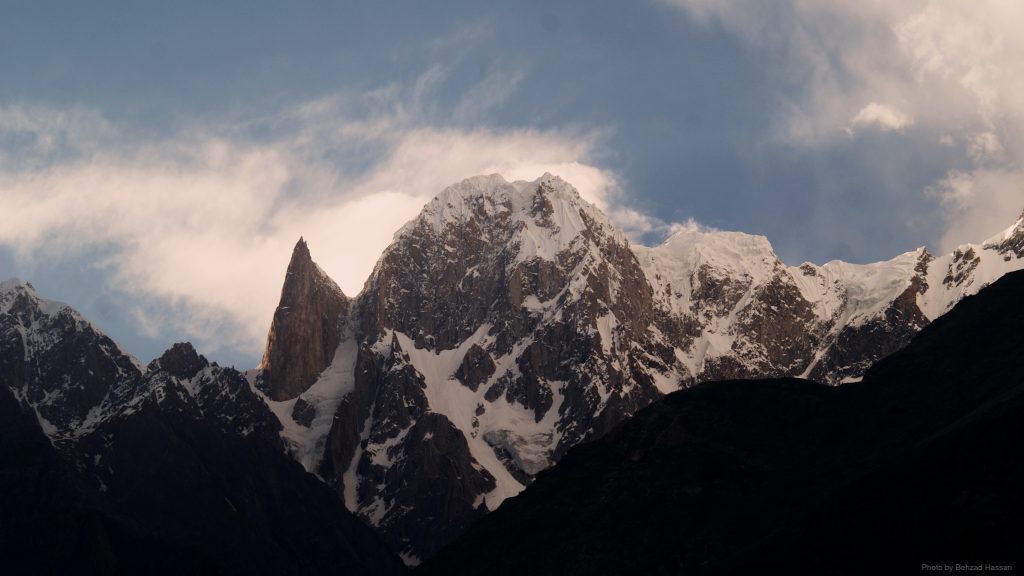


Giselle Morales has written a brief description drawn from the original article: From Subjugation to Extinction A Tragic History of The indigenous People of Gilgit-Baltistan by Amir Wali Khan, that can be found in the Center for World indigenous Studies Fourth World Journal Winter 2020, Volume 19, Number 2.
Colonial states have a long history of inflicting violence upon indigenous communities. In construction projects, governments rarely consult indigenous communities about what they intend to do with sacred land. The region of Gilgit-Baltistan, under the control of Pakistan, has experienced this violence and erasure of indigenous history and land. Many important Burusho artifacts in Gilgit-Baltistan have been destroyed by the construction of the Karakoram Highway and even more will be destroyed by the completion of the Diamer-Bhasha Dam. Colonial states across the globe are notorious for the desecration of indigenous territories and sites. For example, in the United States, the Trump administration’s plan for the construction of the U.S.- Mexico border wall will result in the desecration of many indigenous sacred sites, including burial sites and essential native plants and ecosystems.
Gilgit-Baltistan is a mountainous region between India and China. It is home to the indigenous group, the Burusho or Brusho, also known as the Hunza people. Now, Gilgit-Baltistan is left divided between the new colonial masters, India and Pakistan since the partition of the Subcontinent in 1947. There are over sixty-thousand ancient rock carvings—or petroglyphs—dating back thousands of years in Gilgit-Baltistan. Some of these have been destroyed through blasts for the construction of the Karakoram Highway (KKH) in 1966 under the China-Pakistan Economic Corridor Project. In addition, the Pakistani government plans to construct the Diamer-Bhasha Dam in the very center of one of the areas most densely populated with petroglyphs. Khan writes on the importance of these petroglyphs for the Burusho community of Gilgit-Baltistan:
“They and their coming generations created these large numbers of petroglyphs on rocks across Gilgit-Baltistan, recording their history from early migration to the present day, such as hunting, dancing, religious rituals, games, and everyday life activities. These people inhabited the land and later period, they established it as a free and independent country.”
These petroglyphs are vital for the preservation of the cultural history of the Burusho community. The Pakistani and Chinese governments deliberately excluded the people of Gilgit-Baltistan in the decision-making process of CPEC (China-Pakistan Economic Corridor) project which resulted in the loss of many of the petroglyphs. This is an attempt at cultural genocide. As Khan states:
“The process of imposing ‘so-called Islamic culture’ was carried out very systematically. In the process, the local culture and traditions not only ignored but also rejected naming them ‘unIslamic.’ Local history was rewritten by paid historians and popularized (…) History textbooks and other locally written history books portray the period before Islam as a period of darkness and ignorance and suggest that when Islam came, everything became enlightened (…) Nor do these books appreciate the beautiful petroglyphs present in Gilgit-Baltistan, produced by the indigenous since prehistoric times.”
The colonial powers of Pakistan and China are erasing Burusho history and culture and imposing their own onto these communities. It is important that the history and culture of the Burusho are not overwritten or forgotten.
Furthermore, the construction of these projects are not environmentally friendly. The Burusho, like many other indigenous communities, depend on the land for their survival. Khan states:
“It has been primarily the natural barriers provided by the area’s steep geographical terrain and environment that has saved the plants, animals, and the indigenous people of Gilgit-Baltistan from complete extinction. The natural environment is itself facing the most significant threat ever, due to the disastrous exploitation of this susceptible geographic location, combined with the increasing impacts of climate change and global warming.”
The destruction of land and native ecosystems have a harmful effect on indigenous communities. Khan writes more about these effects in From Subjugation to Extinction: A Tragic History of The indigenous People of Gilgit-Baltistan.
Make sure to check it out in the Center for World Indigenous Studies’ Fourth World Journal Winter 2020 issue!
Amir Wali Khan is an academician and journalist from Gilgit-Baltistan (disputed territory under Pakistani administration). He is currently teaching civilizations and cultures in Canada. He has received his Master’s Degree in Education and served at various schools, universities, The United Nations Educational, Scientific and Cultural Organization, and international development organizations. He has written on diverse topics such as education, environment, politics, and human rights.
The library is dedicated to the memory of Secwepemc Chief George Manuel (1921-1989), to the nations of the Fourth World and to the elders and generations to come.
access here